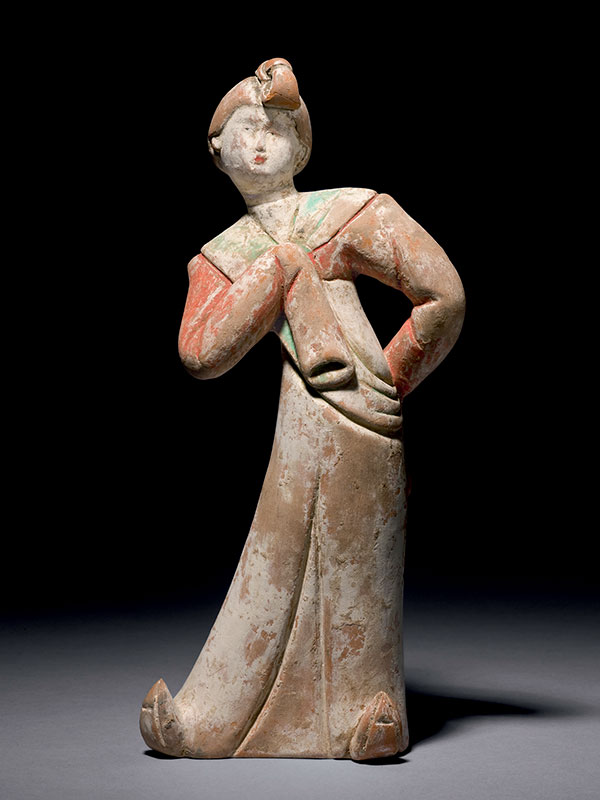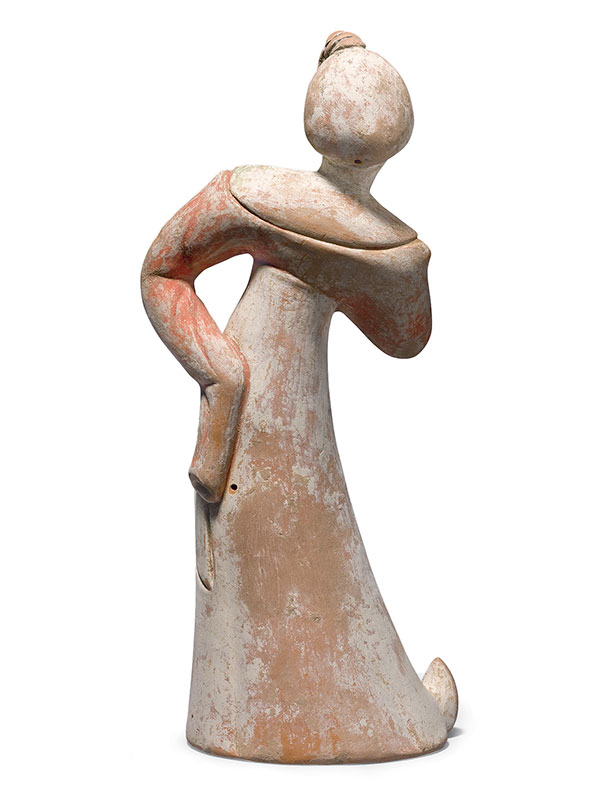Pottery figure of a dancer
A pottery figure of a dancer, standing with her feet apart and her body elegantly inclined to one side. She is dressed in a long-sleeved, full-length robe, which is painted in white and red colours, with a long green cape covering her shoulders. She holds her right hand in front of her chest, with the long sleeve naturally draped down. Her left hand, hiding inside the long sleeve, grabs the long cape and rests on her back. Her long robe falls in pleats to the floor, where her pointed shoes protrude from just underneath the hem. Her hair is neatly arranged and tied into an extravagant chignon. Her round face has a gentle, demure expression, with the features minutely painted with red and black highlights.
This elegant and well-modelled pottery figure reflects the extraordinary sensitivity to beauty in the early Tang dynasty. Her long sleeves and curved body both indicate that she is performing a kind of Tang dynasty ‘soft dance’ (ruan wu), which was gentle and graceful and could be performed by a solo dancer. Such slender-waisted female figures, in sharp contrast with the ample (so-called ‘fat’) ladies fashioned from the reign of emperor Xuanzong (712 – 756), were mainly produced in the early Tang dynasty. A pair of closely comparable Tang pottery dancers, similar in size, posture and with remaining polychrome colour pigments, were possibly made during the Kaozong reign (649 – 683) or the Wu Zetian period (690 – 705) and are in the collection of the Palace Museum, Beijing.[1] Another pair of sancai-glazed pottery figures of dancing ladies, slightly larger in size, is in the Meiyintang collection.[2] Two other comparable dancing ladies are among a group of seated female musicians and are in the collection of the Victoria and Albert Museum.[3]
- Diao Shi Ru Sheng: Gugong Cang Sui Tang Taoyong (Carved and Clothes as if Alive: Sui and Tang Dynasty Tomb Figurines in the Collection of the Palace Museum, Beijing), Beijing, 2006, no. 23-6, pp. 75-7
- Krahl, R. Chinese Ceramics from the Meiyintang Collection, vol. three (I), Paradou Writing, London, 2006, no. 1211, p. 202
- Paludan, A. Chinese Sculpture- A Great Tradition, Serindia Publications, Chicago, 2006, fig. 208, pp. 326 & 328


